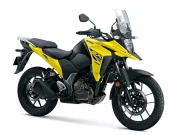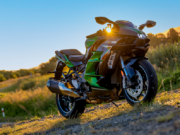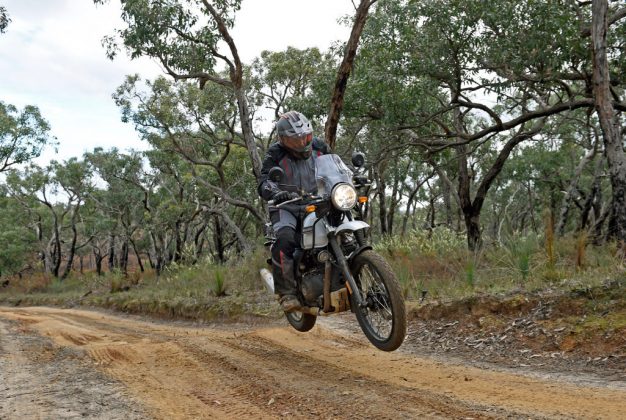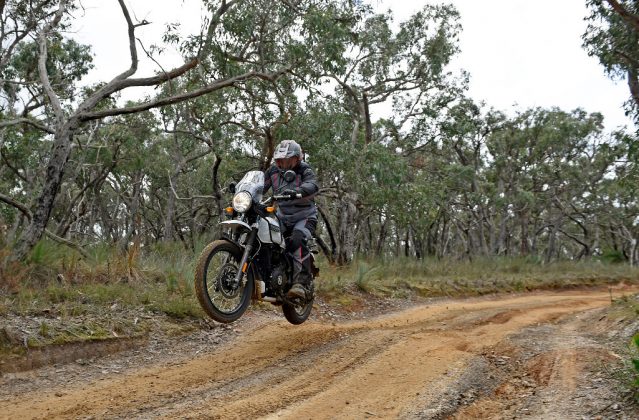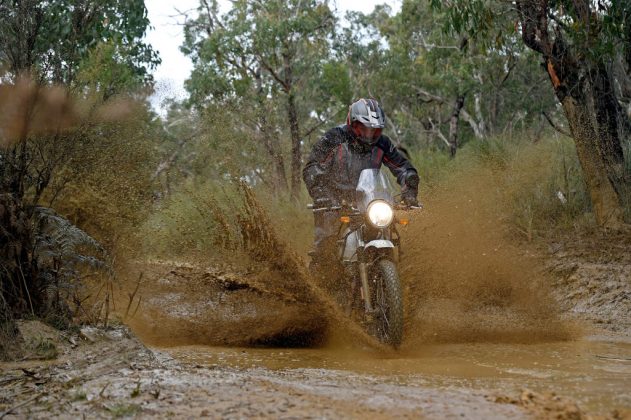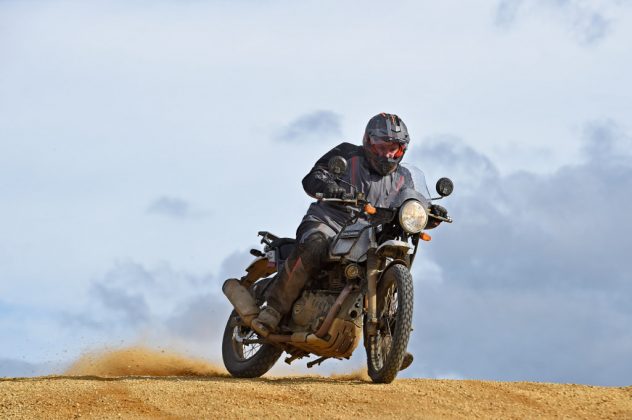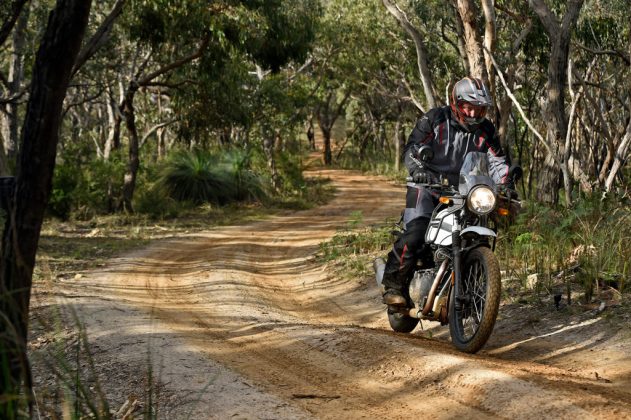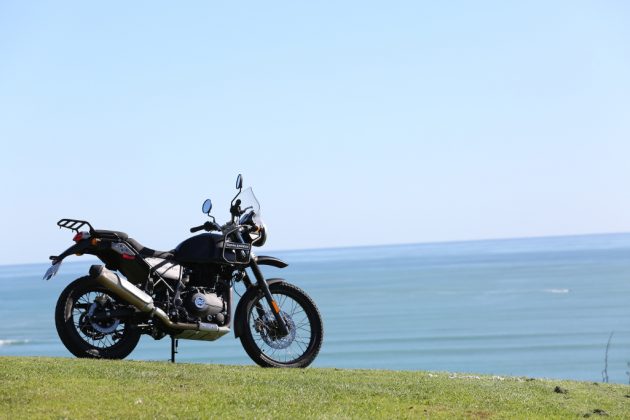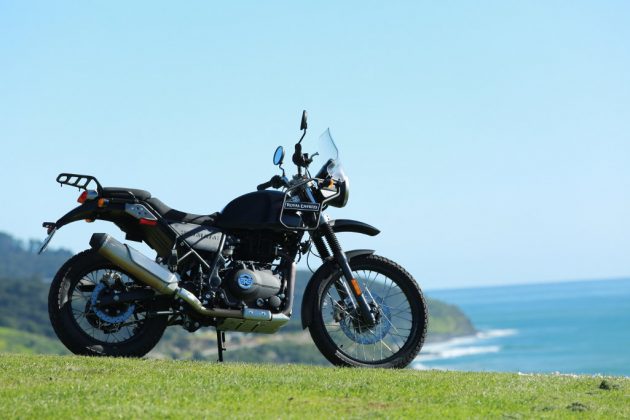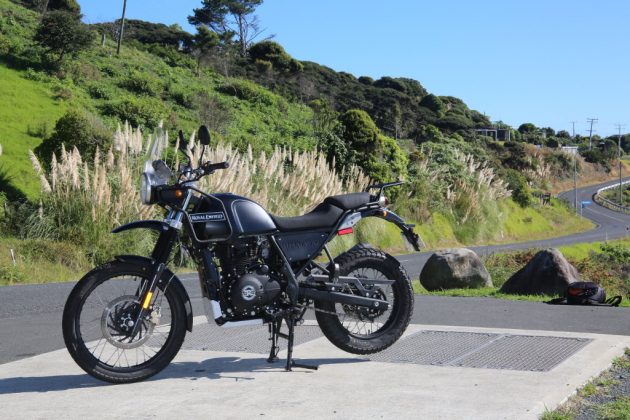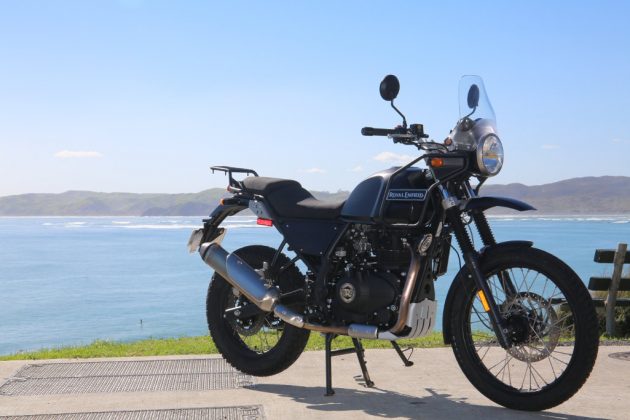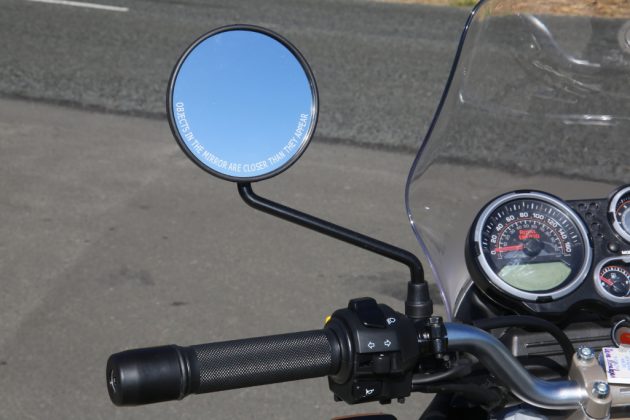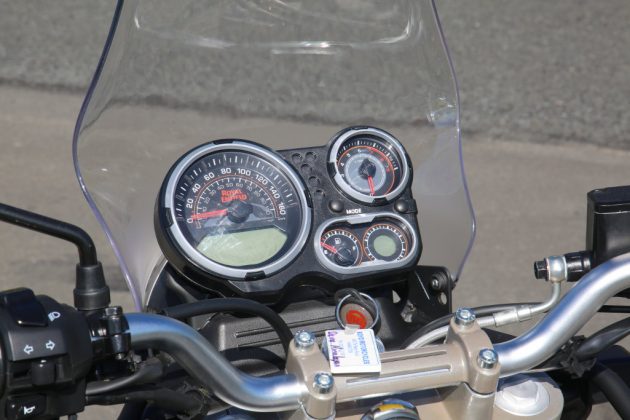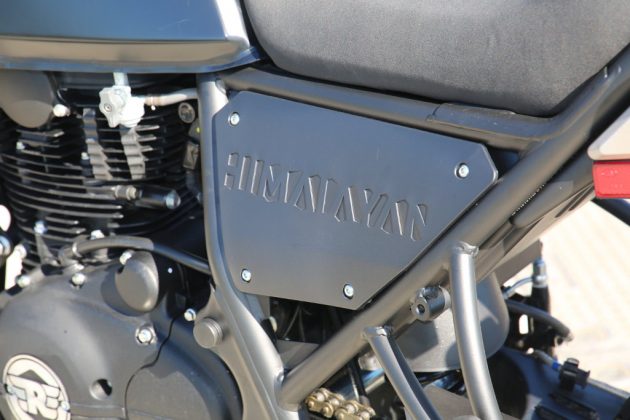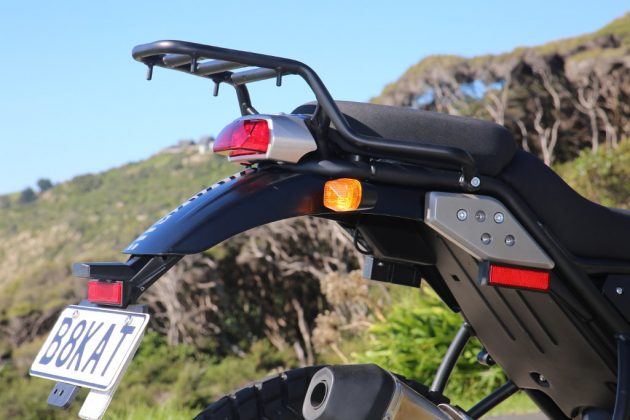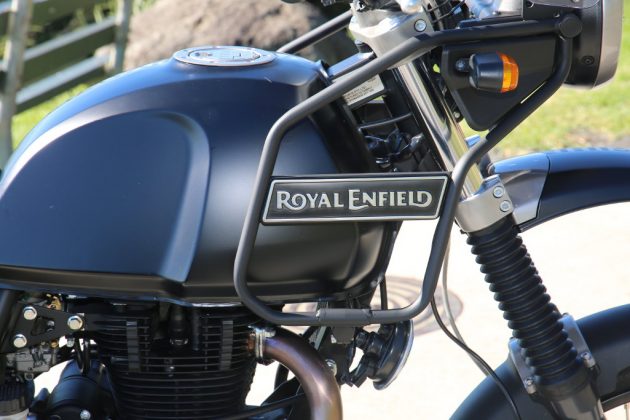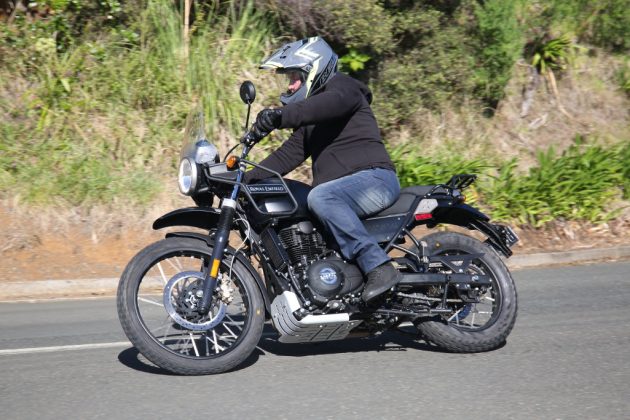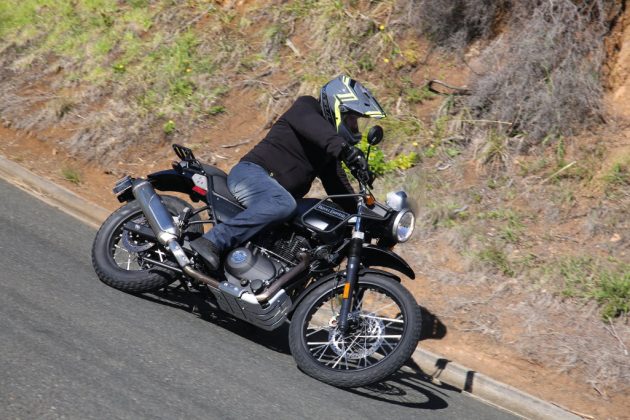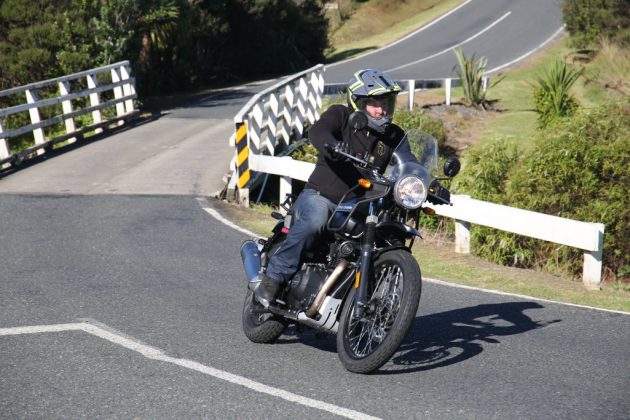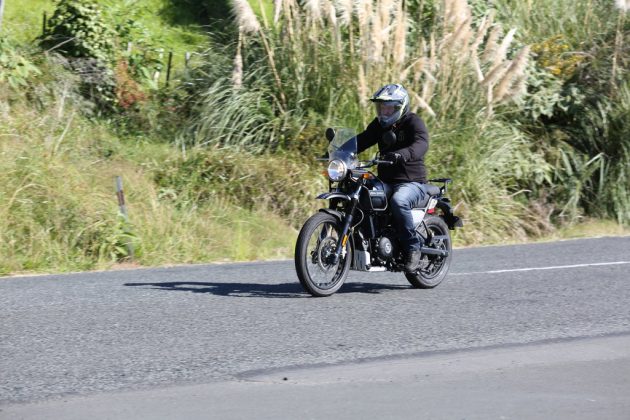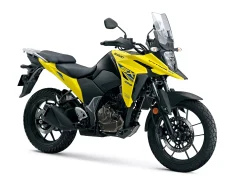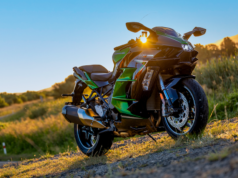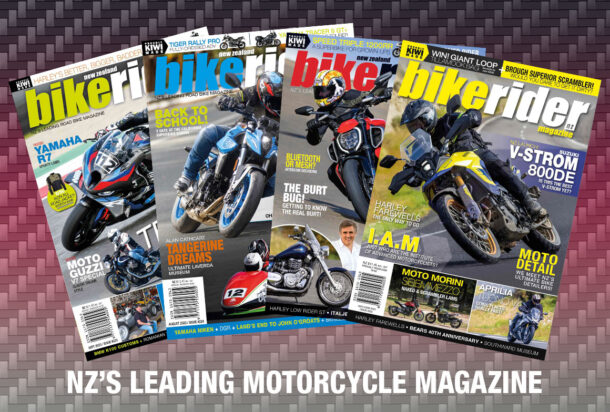With Royal Enfield’s first foray into the adventure market hitting dealer’s floors in April this year, Paul headed out to see if the Himalayan lives up to its name…
Words: Paul Pics: Kerry
Okay, so the surfing town of Raglan is a long way from India where the Himalayan was designed and manufactured, but with the single-cylinder, air-cooled, 411cc four-stroke powerplant purring away beneath me, I couldn’t help thinking how well this bike designed to cross mountain ranges was performing on the twisty roads of New Zealand.
Royal Enfield have a long history of producing motorcycles, and it’s come a long way since the first Enfield hit the road in Redditch, England in 1901. Since then ownership and production moved to India, when, in 1955 the company was purchased by Madras Motors and from their new base in Chennai they continued to produce the 350cc Bullet.
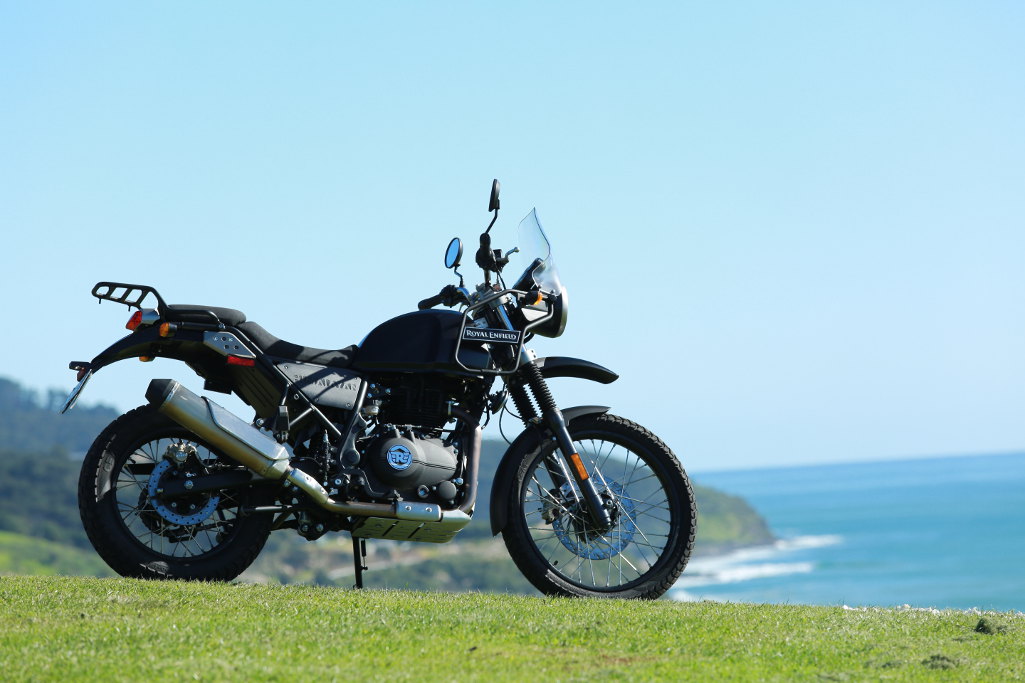 With the Bullet used by many to tour India for the quintessential British/Indian experience, the Enfield team began thinking about a bike which would be more suited for tackling the type of terrain many attempt on the Bullets, while at the same time, cashing in on the burgeoning adventure market. With famous motorcycle designer, Pierre Terblanche enlisted to help pen the new model (although he only lasted 20months based at the European head-quarters), we began seeing glimpses of what was to become the Himalayan in early 2016. A year later and the new model is leading a re-invigorated Royal Enfield brand across the globe including the USA, with the new generation of hipster riders especially liking the mix of classic looks, modern-ish technology combined with a name that reeks of heritage.
With the Bullet used by many to tour India for the quintessential British/Indian experience, the Enfield team began thinking about a bike which would be more suited for tackling the type of terrain many attempt on the Bullets, while at the same time, cashing in on the burgeoning adventure market. With famous motorcycle designer, Pierre Terblanche enlisted to help pen the new model (although he only lasted 20months based at the European head-quarters), we began seeing glimpses of what was to become the Himalayan in early 2016. A year later and the new model is leading a re-invigorated Royal Enfield brand across the globe including the USA, with the new generation of hipster riders especially liking the mix of classic looks, modern-ish technology combined with a name that reeks of heritage.
Keeping It Simple
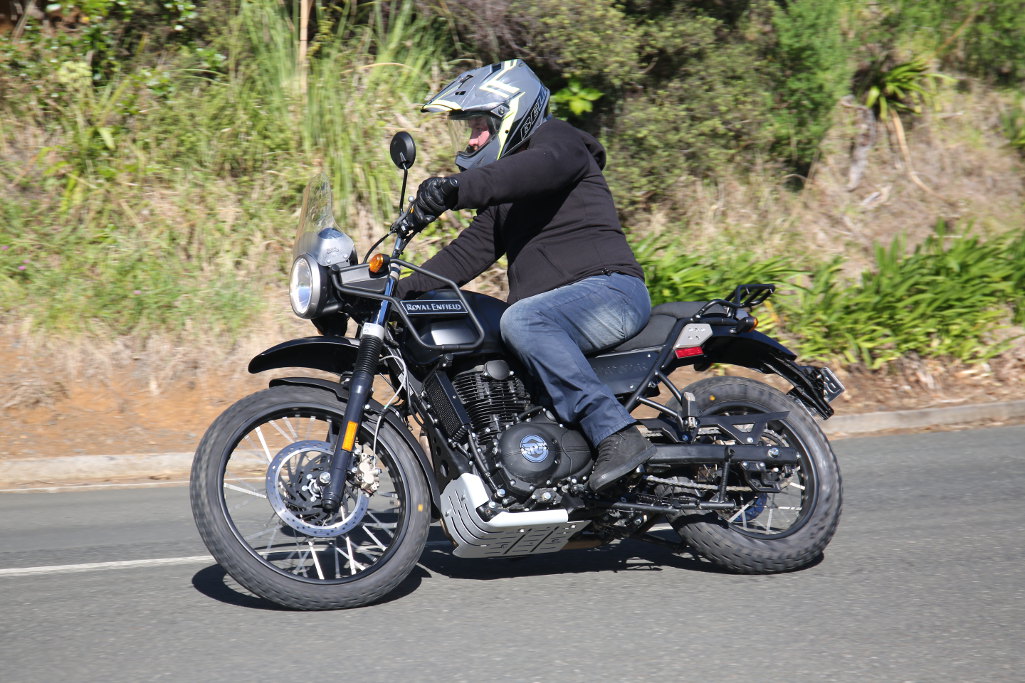 Stepping up to take a ride on the Himalayan courtesy of the good guys at Boyd’s Motorcycles in Hamilton, it’s immediately obvious that I’m not going to be worrying too much about making sure I know how to use the technology. With the salesman showing me where the fuel tap and choke are (both located under the left-side of the tank), it’s like I’ve stepped into a timewarp back to the early eighties. The dash is also old-school, with dials showing speed, revs and fuel, while the only nod to the twentieth century is a couple of LCD screens, with one displaying a compass so you can find your way north to the Harbour Bridge while the other carries the gear indicator, mileage and other associated info. There’s even an air temperature gauge which I thought was really advanced, although the fact I was shivering while the figures read 26degrees made me think they might not have got the technology quite right as yet…
Stepping up to take a ride on the Himalayan courtesy of the good guys at Boyd’s Motorcycles in Hamilton, it’s immediately obvious that I’m not going to be worrying too much about making sure I know how to use the technology. With the salesman showing me where the fuel tap and choke are (both located under the left-side of the tank), it’s like I’ve stepped into a timewarp back to the early eighties. The dash is also old-school, with dials showing speed, revs and fuel, while the only nod to the twentieth century is a couple of LCD screens, with one displaying a compass so you can find your way north to the Harbour Bridge while the other carries the gear indicator, mileage and other associated info. There’s even an air temperature gauge which I thought was really advanced, although the fact I was shivering while the figures read 26degrees made me think they might not have got the technology quite right as yet…
With a utilitarian look, the Himalayan in graphite (it’s also available in white) looked rugged and ready to cross mountain ranges, although I imagine it would look even better with a splash of military green and brown. Still, the Royal Enfield name is obviously on the mind of many people, with the Himalayan getting plenty of looks outside the shop, and later on when we parked outside one of Raglan’s many cafes and continued to try and decide whether we liked or hated the design.
As you’d expect with a 411cc powerplant producing a rather subdued 25hp at 6,500rpm, the Himalayan isn’t a particularly big bike, and after riding a succession of towering mega-horsepower adventure-style machines, it was refreshing to be able to put both feet firmly on the floor. The saddle sits 800mm off the tarmac while the bash plate has 220mm of travel before it snags something firm, which certainly shows Enfield has made a decent effort to make the Himalayan useable off-road. A 21-inch wheel up front means you’ll be able to get decent rubber, although the Indian road-biased tyres fitted to the test bike seemed to handle some reasonably aggressive cornering without getting out of their depth. The same is true of metal roads, with the Himalayan happy to cruise along at a decent clip on loose surfaces without causing concern.
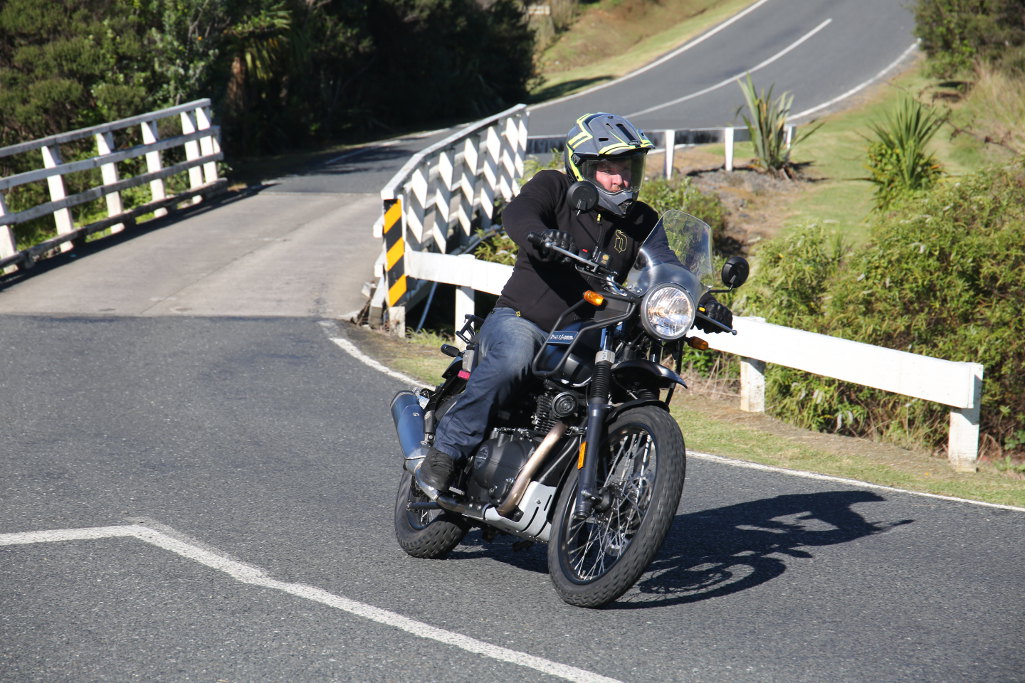 Taking the scenic route out of Hamilton (if there is one…), it wasn’t until the road finally opened up that I started to take the Himalayan a bit more seriously. A four-stroke single is inherently vibey, but sitting at a comfortable 100km/h behind the quirky, almost vertical screen, despite the smaller of the two dials informing me the piston was moving at 5,000 revolutions per minute, the Himalayan was still perfectly smooth, even letting me see what was going on behind through the round rearview mirrors. That was what I was least expecting and certainly show’s that Enfield have thought about what riders needed from the Himalayan.
Taking the scenic route out of Hamilton (if there is one…), it wasn’t until the road finally opened up that I started to take the Himalayan a bit more seriously. A four-stroke single is inherently vibey, but sitting at a comfortable 100km/h behind the quirky, almost vertical screen, despite the smaller of the two dials informing me the piston was moving at 5,000 revolutions per minute, the Himalayan was still perfectly smooth, even letting me see what was going on behind through the round rearview mirrors. That was what I was least expecting and certainly show’s that Enfield have thought about what riders needed from the Himalayan.
Despite the old-school styling, riding the Himalayan was becoming more entertaining the longer I spent with the intrepid explorer, as long as you’re happy to accept and stay within the Indian machine’s limitations. The powerplant is willing to rev, but with anything more than 5,500rpm showing on the dial and you’re wasting your time, with another cog needing to be selected. The gearbox needs to be coaxed rather than flicked, and the none-adjustable clutch lever is required for almost all changes. Finding neutral is a game you’re likely to win around 50 per cent of the time and don’t expect too much from the twin-piston caliper up front. Braking is adequate for general use but you aren’t likely to notice the lack of an anti-lock brake system unless you give the lever a mammoth tug with all fingers or stamp on the lever to activate the rear brake.
That’s not to say you can’t get along at a decent pace, and the Himalayan will climb most of our hills at a steady 100km/h in top gear. You aren’t going to be pulling out to pass anything, but you also aren’t going to find a milk tanker pushing you from behind. The suspension, especially the non-adjustable conventional forks, is reasonably firm making the Himalayan composed through the corners but also rewarding you with a decent kick when you can’t avoid a bump at speed. The rear monoshock – a first for Royal Enfield – has a healthy 170mm of travel and manages to absorb the bumps better than front-end and also features preload adjustment for when you want to load the Himalayan with luggage and attempt to circumnavigate something.
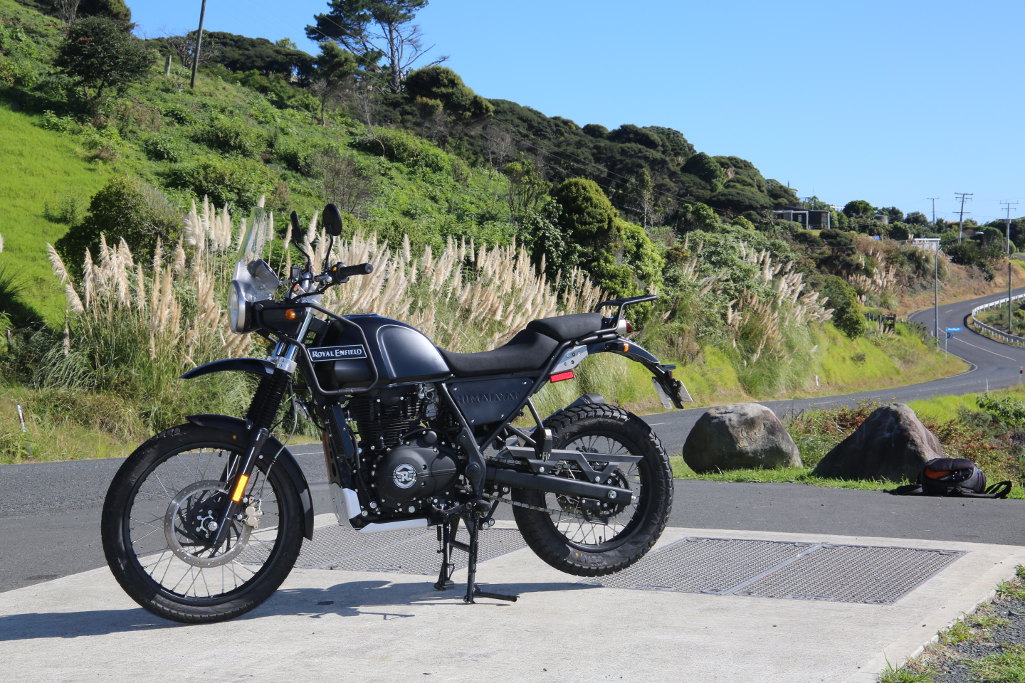 Despite a relatively small 15-litre tank, your exploring isn’t limited thanks to the frugal fuel usage of Enfield’s LS410 engine which should see a range of over 450km between stops. A rest to remove yourself from the saddle would probably be in order before then, but with a reasonably relaxed bar, seat, peg combination, the Himalayan is surprisingly a reasonably effective long-distance tourer for those keen to tackle a journey at a more relaxed pace. With around 140km/h probably achievable – I didn’t find a straight long enough to confirm this – the Himalayan is in its happy pace at the legal limit and not much more.
Despite a relatively small 15-litre tank, your exploring isn’t limited thanks to the frugal fuel usage of Enfield’s LS410 engine which should see a range of over 450km between stops. A rest to remove yourself from the saddle would probably be in order before then, but with a reasonably relaxed bar, seat, peg combination, the Himalayan is surprisingly a reasonably effective long-distance tourer for those keen to tackle a journey at a more relaxed pace. With around 140km/h probably achievable – I didn’t find a straight long enough to confirm this – the Himalayan is in its happy pace at the legal limit and not much more.
Indian Adventure
As for riding across the Himalayas on one of these models, I can only imagine that you’d want to be carrying a decent tool kit. Although we had no issues whatsoever with the test bike, we’re pretty sure that tackling anything much more than an easy gravel road or trail would start to highlight some of the Indian ingredients of the Himalayan. But then, the reason that Enfield decided to keep the LS410 powerplant simple and fit it with a carb is purely to make the Himalayan fixable at the side of a trail. With modern adventure bikes getting so complicated you almost need a degree in astrophysics to work on them, that’s bound to be attractive to those capable of twiddling some spanners.
Off-road ability is also likely to be more in the region of taking it nice and slow as you don’t have the power to lift the front wheel over obstacles or holes, so just like on the tarseal, it’ll be a case of steady away on the Himalayan rather than attacking something at speed. More than likely, the average Himalayan owner is likely to be tackling the daily commute through traffic rather than the wilds of India, and despite the adventure looks of the bike, this is where we think it will really shine. With plenty of options for luggage, a profile so narrow that the widest part was probably my shoulders, and an upright riding position all make for the perfect machine for tackling the traffic jams. Despite the handlebars being high and falling nicely to hand, they aren’t especially wide so you aren’t likely to be collecting wing mirrors, and with the bars around the front looking almost like they’re fitted for crash protection, you can be reasonably confident the Enfield will be able to take the knocks.
Finally, there’s the price, and this is what is likely to make the Himalayan a winner for many. At $6,990 for a brand new bike, there isn’t much out there which will come close to the Enfield for its manners on the road and ability to cover large distances. If you’re looking for a bike to handle a bit more off-road abuse then you’re probably better to look elsewhere, but if an affordable bike that has a bit of heritage, quirky looks and easy-to-live-with manners is what you’re after, then a Himalayan may well be worth a look. More scrambler than adventure, the new Enfield certainly looks like it’s up to the challenge of crossing mountain ranges, even if the reality is probably different. Still, with many adventure riders never actually venturing further off the black stuff than a trip into a gravel car park, the fact the Himalayan doesn’t have big off-road abilities is purely academic.
2017 Royal Enfield Himalayan Specifications
| Type | Single-cylinder, 4-stroke, air-cooled, SOHC |
| Displacement | 411cc |
| Bore x Stroke | 78mm x 86mm |
| Compression Ratio | 9.5:1 |
| Maximum Power | 24.5hp @ 6500 rpm |
| Maximum Torque | 32Nm @ 4250 rpm |
| Ignition system | Digital electronic ignition |
| Clutch | Wet, multi-plate |
| Gearbox | 5-speed constant mesh |
| Frame | Half-duplex split cradle frame |
| Front suspension | Telescopic, 41 mm forks, 200 mm travel |
| Rear suspension | Monoshock with linkage, 180 mm wheel travel |
| Wheelbase | 1465mm |
| Ground clearance | 220mm |
| Length | 2190mm |
| Width | 840mm |
| Height | 1360mm (Fly Screen Top) |
| Seat height | 800mm |
| Kerb weight | 191kg |
| Fuel capacity | 15-litres |
| Front wheel | 21-inch |
| Rear wheel | 17-inch |
| Front tyre | 90/90 – 21 |
| Rear tyre | 120/90 – 17 |
| Front brakes | 300 mm disc, 2-piston floating caliper |
| Rear brakes | 240 mm disc, single piston floating caliper |
| Colour | Snow/Granite |





